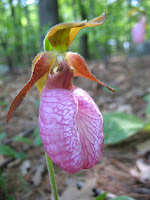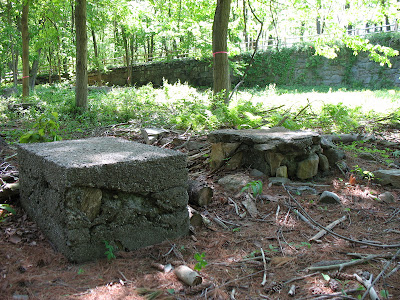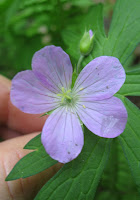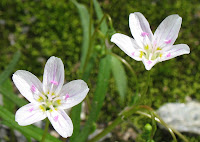Check out these monster mushrooms growing on the Rec Path near Meadow Street in woodchips.  Apparently conditions have been ideal for the mushrooms there because there are several different types, one quite pretty (see photos). I also took photos of pink lady slippers in bloom next to Hope Lake, near the point where Oak Valley and Dominick Trails meet. They bloom in that spot each year in May and are usually still in bloom about the time of Trails Day (first Saturday in June). Also took pictures of some Wisteria in bloom along Shelton Ave where the Rec Path crosses the road. It looks like the Chinese Wisteria, which is an invasive species. A pretty one, though.
Apparently conditions have been ideal for the mushrooms there because there are several different types, one quite pretty (see photos). I also took photos of pink lady slippers in bloom next to Hope Lake, near the point where Oak Valley and Dominick Trails meet. They bloom in that spot each year in May and are usually still in bloom about the time of Trails Day (first Saturday in June). Also took pictures of some Wisteria in bloom along Shelton Ave where the Rec Path crosses the road. It looks like the Chinese Wisteria, which is an invasive species. A pretty one, though. 
 Apparently conditions have been ideal for the mushrooms there because there are several different types, one quite pretty (see photos). I also took photos of pink lady slippers in bloom next to Hope Lake, near the point where Oak Valley and Dominick Trails meet. They bloom in that spot each year in May and are usually still in bloom about the time of Trails Day (first Saturday in June). Also took pictures of some Wisteria in bloom along Shelton Ave where the Rec Path crosses the road. It looks like the Chinese Wisteria, which is an invasive species. A pretty one, though.
Apparently conditions have been ideal for the mushrooms there because there are several different types, one quite pretty (see photos). I also took photos of pink lady slippers in bloom next to Hope Lake, near the point where Oak Valley and Dominick Trails meet. They bloom in that spot each year in May and are usually still in bloom about the time of Trails Day (first Saturday in June). Also took pictures of some Wisteria in bloom along Shelton Ave where the Rec Path crosses the road. It looks like the Chinese Wisteria, which is an invasive species. A pretty one, though. 




.jpg)


